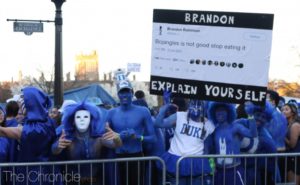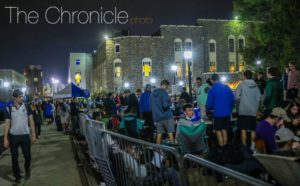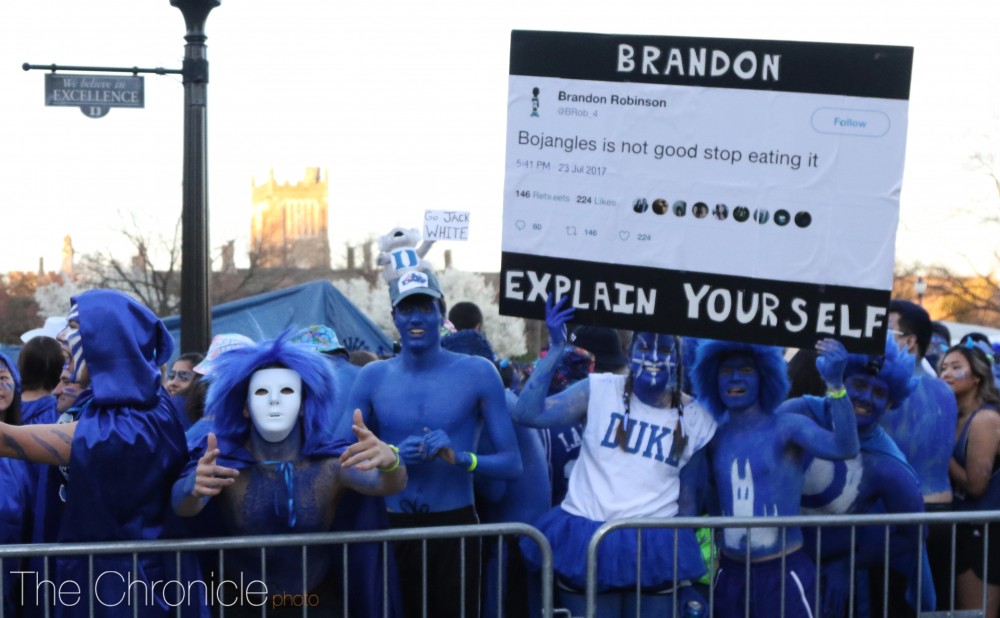The MOOC discussed the organization revolving around movements and the various responses to different social problems that includes humor, mourning and pain, and dancing and partying. While the Duke walkup line is not necessarily a movement in response to a societal issue, it has similarities to a social movement in that it organizes people together who have a common goal. Similarly to marches, boycotts, and other actions to encourage change, the walkup line, if not controlled, can turn into a sort of violence or riot as was shown this year.
All of the Duke students who participated in walkup line had a common desire: they wanted to get into the Duke vs. UNC game, the biggest game of the year. It is a flawed system that has been in place for multiple years. Students must wait outside in K-ville for approximately 3 days with a partner in order for a chance to be admitted to the game after all of the tenters are let inside the stadium. The gathering often turns to partying, as stated in the MOOC as a response to adversity, while they pass the time in the cold.
This year, the system failed. Many people cut in line during the days leading up to the game, and on game day, the walkup liners turned into an angry hostile mob, which caused the police to get involved, rewarded the disobedient, and brought many to tears.
The solution to this flawed system is not to boycott or refuse to walkup line. That is simply not realistic because people want to get into the game and there is no other means to get in as a student besides paying thousands of dollars for a ticket or sleeping in a tent for weeks. Those who did not get in this year have responded with humor, as seen in various posts on social media, and expression of pain and calls for change as seen in the Duke Chronicle article written by a Duke line monitor. Link posted below.
http://www.dukechronicle.com/article/2018/03/its-time-to-kill-walk-up-line



